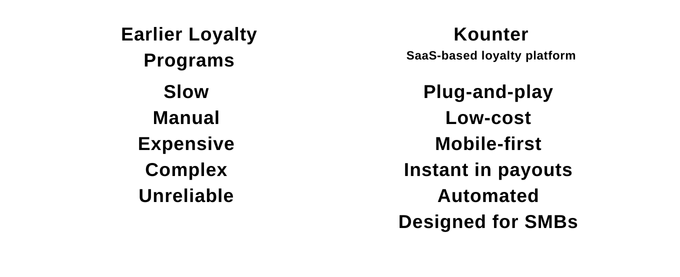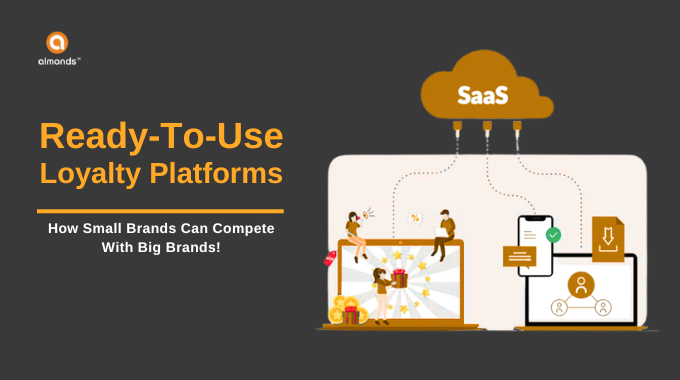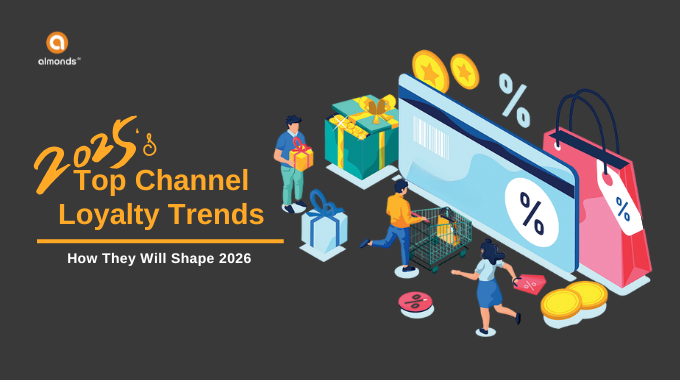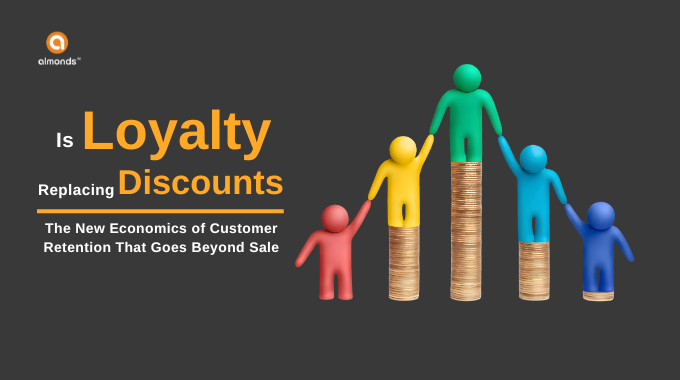For decades, large brands dominated retail shelves by outspending everyone else, bigger trade schemes, flashier consumer promotions, deeper discounts, and massive sales teams. But today, the competitive landscape has quietly shifted. Small and mid-sized brands now finally have a way to compete with ready-to-use loyalty platforms.
Not the old-school approach where brands spend lakhs, wait months for development, and still face limited channel engagement.
But smart, instant, automated loyalty systems help boost dealer, retailer, and influencer engagement at a fraction of the cost.
In a market like India, where 13 million retailers and 300+ product categories fight for attention, small brands suddenly have the tools to stay in the game without matching big-brand budgets.
This blog explores how plug-and-play loyalty platforms level the playing field and give small brands a real edge.
Why Small Brands Struggle
Small brands are not failing because their products are weak. They struggle because the channel ecosystem is designed to reward consistency, visibility, and volume, areas where smaller players are naturally disadvantaged.
Here’s a fuller breakdown:
1. Limited Sales Manpower
Big brands deploy large field teams who visit retailers every week. These reps:
- Remind retailers about schemes
- Negotiate better shelf space
- Collect orders
- Ensure visibility and compliance
Small brands may have 1 salesperson managing an entire district, which means:
- Retailers don’t get frequent touchpoints
- Schemes are forgotten before participation
- Competitor brands occupy all mental space at the counter
Impact
Retailers prioritize brands whose reps visit frequently, even if the competing brand offers better margins.
Modern loyalty platforms reduce this dependency by automating communication, nudges, and engagement, giving small brands a digital salesforce.
2. Low Visibility at Retail
Visibility is currency in retail. Big brands pay for:
- Premium shelves
- Counter-top displays
- Retailer signages
- Inventory reminders
- Branded danglers and POP material
Small brands simply cannot spend at the same scale. This leads to:
- poor visibility → lower recall
- reduced trust → lower reorder priority
- fewer push sales → slower growth
Impact
Retailers naturally push the brands that push them not necessarily the best product.
Digital loyalty programs help small brands stay visible daily through app notifications, nudges, gamified challenges, and reward triggers without expensive physical assets.
3. Weak Data Visibility
Most SMBs run trade schemes blindly. They don’t know:
- Which retailer participates the most
- Who often buys, but in small volumes
- Which region is showing interest
- How many invoices come from new vs. repeat buyers
- What SKUs are driving the growth
Without data, brands:
- Reward the wrong retailers
- Continue ineffective schemes
- Overdependence on distributors for reporting
- Miss out on their high-value partners
Impact:
Brands cannot plan production, pricing, or promotions efficiently.
Digital loyalty platforms turn every invoice into structured data giving small brands insights they never had access to.
4. Inconsistent Channel Engagement
Big brands run schemes every month—creating predictable excitement.
Small brands run only 2–3 schemes per year, which leads to:
- Engagement spikes only during offer months
- Long silent periods
- Channel partners forgetting the brand
- Inconsistent sales cycles
Retailers start treating small brands as “occasional earners.”
Impact
When a retailer interacts with a brand only 3 times a year, loyalty cannot form.
Modern loyalty-tech shifts this from quarterly interaction to daily nudges and micro-engagements, building habit and recall.
From Big-Budget Battles to Smart Engagement Systems
Retailers today don’t just want discounts; they want to value something that feels personal and fair.
Here’s why:
Retailers want fair rewards for their effort
A retailer selling 10 units wants to feel valued the same way a retailer selling 1,000 units does but in proportion. Traditional schemes fail here. Modern loyalty apps allow dynamic rewards based on individual contribution.
They prefer instant gratification
Nobody wants to wait 30–60 days for credit validation, settlement cycles, and approval of loops. Instant rewards influence repeat behavior immediately.
They want simple processes
Retailers are busy. If participation feels complex, they simply skip it.
Mobile-first loyalty keeps engagement frictionless.
They want consistent recognition
A retailer selling your brand every week expects your brand to acknowledge it—not only during 3 annual scheme periods.
Digital loyalty delivers that consistency.
How Modern Loyalty-Tech Helps Small Brands
1. Instant Rewards Create Trust Faster
Big brands rely on manual backend checks which delay payouts.
Small brands using automated loyalty systems offer real-time validation, which translates to:
- Fewer disputes
- Faster trust building
- Higher repeat participation
Why this matters
Retailers promote the brands that reward them quickest.
Instant gratification = instant loyalty.
2. Digital Loyalty Eliminates the Manpower Gap
A well-designed loyalty program acts like a virtual salesforce, automating tasks that otherwise need 10+ field executives:
- Onboarding new retailers
- Communicating new schemes
- Reminder pings for participation
- Performance-driven nudges
- Real-time visibility of progress
Impact
Small brands operate like big brands, without the big cost.
3. Data Gives Small Brands Negotiation Power
Every invoice uploaded provides:
- SKU-wise performance
- Retailer-wise potential
- Geography-wise gaps
- Repeat buying trends
- Product-season demand cycles
This enables small brands to:
- Identify their top 20% high-value retailers
- Predict demand more accurately
- Run sharper offers for specific segments
- Negotiate better terms with distributors
Impact
Data reduces dependency on guesswork.
Small brands gain strategic edge without increasing spend.
4. Gamification Drives Daily Engagement
Gamification works because it triggers psychological motivators:
- Achievement
- Consistency
- Curiosity
- Competitive spirit
Daily micro-goals create daily micro-actions.
Impact
Retailers engage with the brand every week, not 3 times a year.
5. Transparent Earnings Build Long-Term Loyalty
When retailers understand how they are earning and redeeming, something important happens—trust compounds.
Small brands win by offering:
- Live points calculator
- Redemption with one tap
- Simple earning rules
- Instant UPI/cashback options
Impact
Retailers stay loyal not because of the reward amount, but because of the clarity and fairness.
Flexibility: The Competitive Advantage
If large brands have budgets, small brands have speed—and loyalty-tech amplifies that advantage.
- Big brands take months to launch a scheme. Small brands can do it in hours.
- Big brands need multiple approval layers. Small brands can test, learn, and optimise quickly.
- Big brands run one-size-fits-all campaigns. Small brands run localized, personalized incentives.
Flexibility becomes a competitive weapon.
What Small Brands Can Achieve With the Right Loyalty System
Even with limited budgets, small brands can unlock outcomes such as:
- 2–4X increase in repeat orders: Retailers reorder more when rewards are meaningful and instant.
- Lower channel churn: Partners who feel valued stay longer.
- Higher in-store visibility: Retailers prioritize brands that reward consistently.
- Direct access to retailer data: No reliance on distributors for reporting.
- ROI-friendly schemes: Reward actual outcomes—not just participation.
These results were once exclusive to big brands. Not anymore.
What Makes This Possible?
Earlier loyalty programs were:

This is where Kounter by Almonds Ai comes in, a ready-to-use loyalty platform.
Kounter offers enterprise-grade loyalty capabilities at SMB-friendly costs, helping brands:
- Run retailer loyalty programs in minutes
- Reward instantly via UPI, cashback, or gift cards
- Eliminate fraud and double billing
- Run gamified challenges
- Get retailer-wise sales visibility
- Manage everything from one dashboard
It gives SMBs the power of a big-brand loyalty engine, with the simplicity and affordability they need.
Final Thought
Small Brands Don’t Need Bigger Budgets, They Need Ready-to-Use Loyalty Platform
The future belongs to brands that engage smarter, not spend heavier.
Loyalty-tech empowers small brands to:
- Stay in front of retailers daily
- Reward consistently
- Capture reliable data
- Create emotional loyalty
- Scale without large teams
In a channel-driven market like India, the brand that builds the strongest retailer relationships, wins. And for the first time, every brand—big or small—has the tools to do it.







